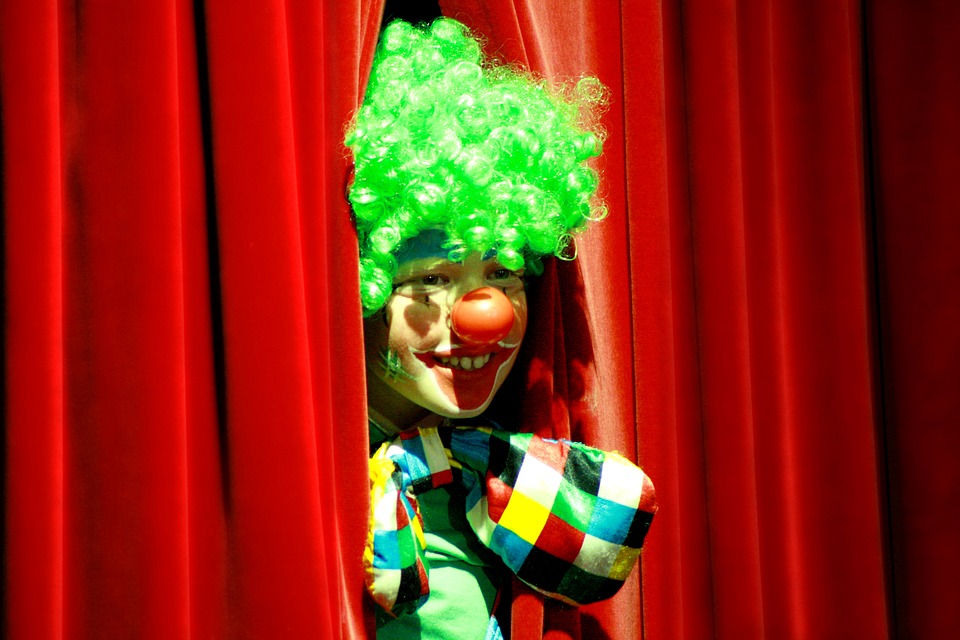3 Smart Ways to Have Children Interact with Costumed Characters
 Summer is a time for parades and parties, and that increases the likelihood of small children encountering costumed characters. That can be a problem, for young children are often afraid of such characters. There are even words to describe such fears: masklophobia, the fear of masks, and coulrophobia, the fear of clowns. The latter is particularly widespread and can affect even older children and adults.
Summer is a time for parades and parties, and that increases the likelihood of small children encountering costumed characters. That can be a problem, for young children are often afraid of such characters. There are even words to describe such fears: masklophobia, the fear of masks, and coulrophobia, the fear of clowns. The latter is particularly widespread and can affect even older children and adults.
In 2008, researchers at the UK’s University of Sheffield surveyed 250 children between the ages of 4 and 16. The researchers showed the children pictures of clowns that had been used to decorate the hospital and asked them their opinion. It turned out that everybody, even the teen-agers, disliked the clown pictures. They found the clowns “unknowable” and “frightening.”
Why do kids hate clowns and other costumed characters?
Toddlers and other small children have trouble distinguishing between fantasy and reality. If they see Jafar at Disney World, they think it’s the actual villain. They can’t yet tell that it’s simply an ordinary man dressed up like him. To make matters worse, toddlers are very aware that they’re smaller and weaker than adults, so a strange adult in a costume is likely to frighten them.
Clowns seem to be especially scary. Not only are they big and strange-looking, they are also noisy and unpredictable. They toot bicycle horns and they squirt people with flowers; they do things beyond a child’s understanding. Adults might find the clown’s antics funny, but small children find them frightening.
There are ways to help a child interact with a costumed character without fear. Consider these three tactics:
1) Acknowledge the fear.
The first and most important step in helping a child handle their fear of a costumed character is to acknowledge and accept it. A parent should not tease or belittle the child for their fear of clowns or Disney characters. Similarly, they should not force the issue. The child will only become even more upset if their parent makes them pose with the clown or, worse, sit in their lap. That can confuse as well as scare a child, for their parents have probably already taught them to not get too close to strange adults.
On the other hand, respectfully acknowledging the fear can reassure the child that their parents understand. It may even encourage the child to face the character bravely, for they know their parents have their back.
2) Try to prepare the child.
If a child is going to a theme park with cartoon characters or even to a friend’s birthday party that has a clown, the parents can help the child prepare for the encounter. Simply telling them, “It’s a man in a costume” might not be enough, though. The parents should show the child what’s involved in dressing up like a clown or cartoon character. They should get masks and costumes to show the child. They should get clown make-up and put some on. A parent can even dress up like a character with the child watching, so they can see what’s involved in portraying a given character – and so that the child can see that they’re an ordinary, unthreatening person under the costume.
3) Pick a character the child knows and finds appealing.
A child will probably be less likely to panic upon facing a costumed character if the parents take them to see a character from their favorite show. The child will already know what the character is supposed to be like, whether they are funny or kind, so they will know what to expect from the person portraying the character. Again, the parents should not force the issue. Instead, they should let the child decide whether to approach the character or simply watch them from a distance.
Most children grow out of their fear of costumed characters by the time they reach school age. The parents can help the process by treating their child with kindness and respect and not making them feel ashamed of their fear.

















